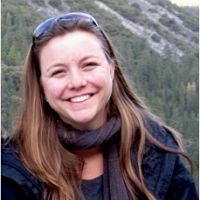Orem, 2014
The frequency and magnitude of flood discharges and post-wildfire erosion in the southwestern U.S.
Orem C.A. (2014)
Disertation in Geosiences. University of Arizona, Tucson, Arizona, 196 pp
-
Catalina-Jemez, GRAD STUDENT
Abstract
The relative importance of infrequent, episodic geomorphic events (e.g. floods, landslides, debris flows, earthquakes, tsunamis, etc.) in the evolution of the landscape has been a long-discussed question in the geomorphology community. These events are large in magnitude, but low in frequency, posing the complex question of how effective these events are at shaping the landscape. Unfortunately, the frequencies of these events are so low that it is extremely difficult to observe these events over human time scales. Also, the dangerous nature of these events makes them extremely difficult to observe and measure. However, the last few decades have brought new technology and techniques that provide a way to measure and calculate the magnitudes of these events more accurately and completely. In the present study, we use Next-Generation-Radar (NEXRAD) precipitation products, LiDAR tools, and multiple denudation-rate techniques to approach the magnitude and frequency of episodic events in different ways. Using NEXRAD precipitation products in conjunction with flow-routing algorithms, we were able to improve upon the traditional flood-envelope curves used to estimate the largest possible flood for a given basin area within a region. Improvements included adding frequency and uncertainty information to curves for the Upper and Lower Colorado River Basin, which in turn makes these curves more informative for flood hazard and policy applications. This study allowed us to improve upon a known flood-analysis method for identifying the distribution of the maximum floods with basin area. Both airborne and terrestrial LiDAR methods were used to measure the magnitude and time scale of the post-wildfire erosional response in two watersheds after the Las Conchas fire of 2011 in the Valles Caldera, NM. We found that sediment yield (measured by differencing LiDAR-derived DEMs) decreased exponentially with time in one watershed, while sediment yield in the other watershed decreased in a more complex way with time. Both watersheds had a recovery time (i.e. time interval over which sediment yields recovered to pre-wildfire levels) of one year. LiDAR was also used to understand the complex response of, and the processes on, the piedmonts adjacent to the watersheds. Overall, LiDAR proved to be extremely useful in measuring the magnitude and time scale of post-wildfire geomorphic response and observing the piedmont dynamics associated with elevated sediment yield. To understand the effects of wildfire on the long-term evolution of the landscape, techniques ranging from the relatively simple, traditional techniques (i.e. suspended-sediment-load sampling and paleosurface and modern surface differencing) to more complex and new techniques (i.e. ¹⁰Be and LiDAR) were used to measure the volumes and rates of denudation over multiple time scales in the Valles Caldera, NM. Long-term denudation rates were higher than short-term, non-wildfire-affected denudation rates, but lower than short-term, wildfire-affected denudation rates. Wildfire-affected denudation rates occurring at previously predicted frequencies (occurring<3% of the time interval) were found to account for the majority of long-term denudation, attesting to the importance of these episodic and extreme events in the evolution of the landscape.
Citation
Orem C.A. (2014): The frequency and magnitude of flood discharges and post-wildfire erosion in the southwestern US. Disertation in Geosiences. University of Arizona, Tucson, Arizona, 196 pp.
 This Paper/Book acknowledges NSF CZO grant support.
This Paper/Book acknowledges NSF CZO grant support.
Explore Further

